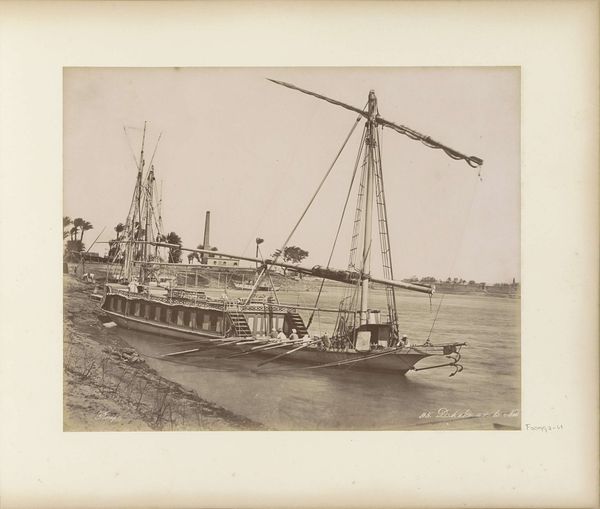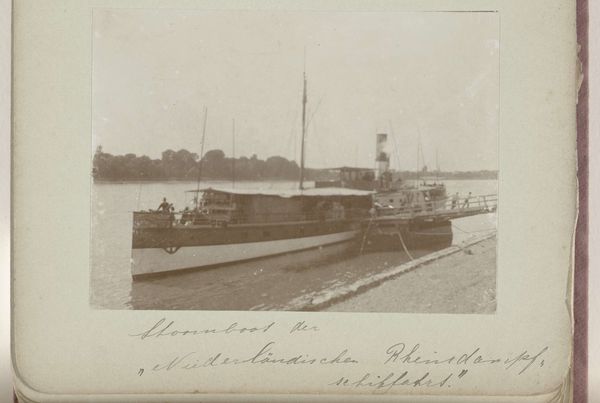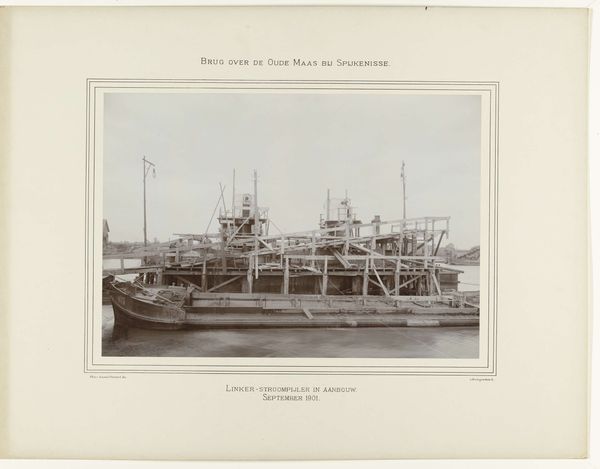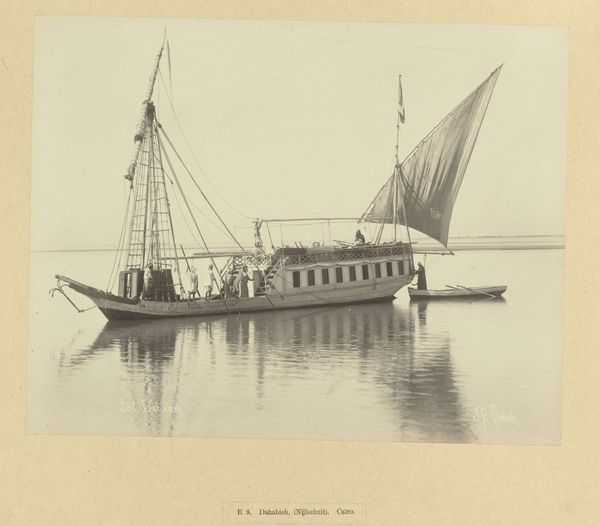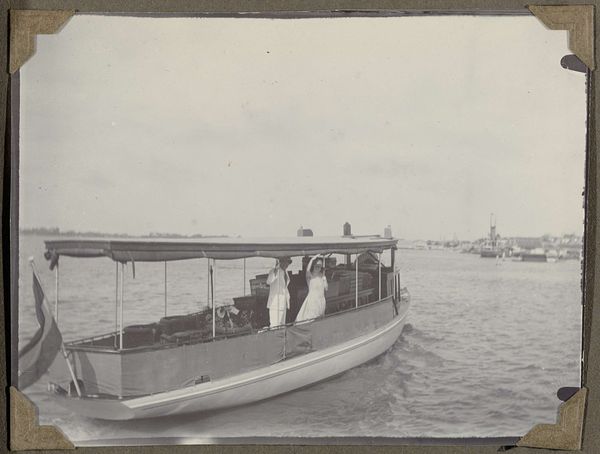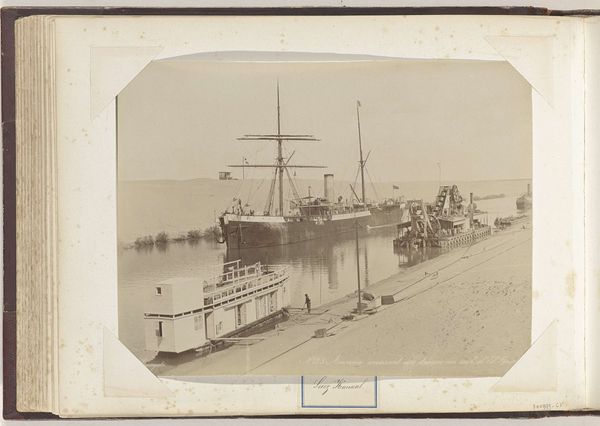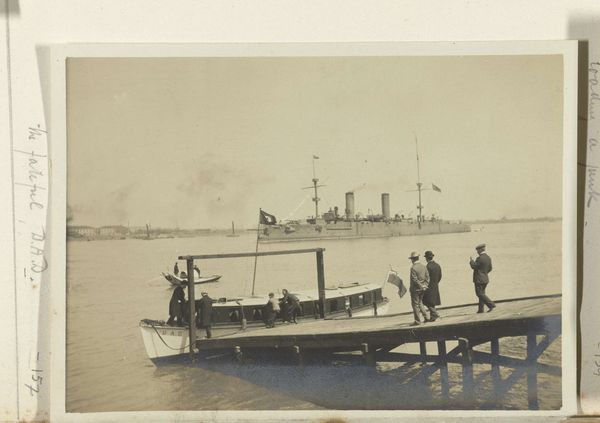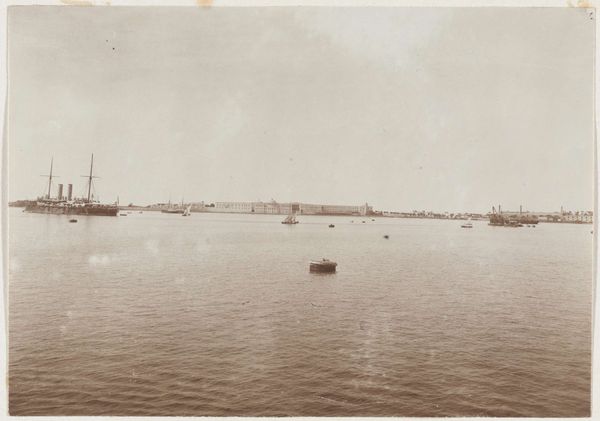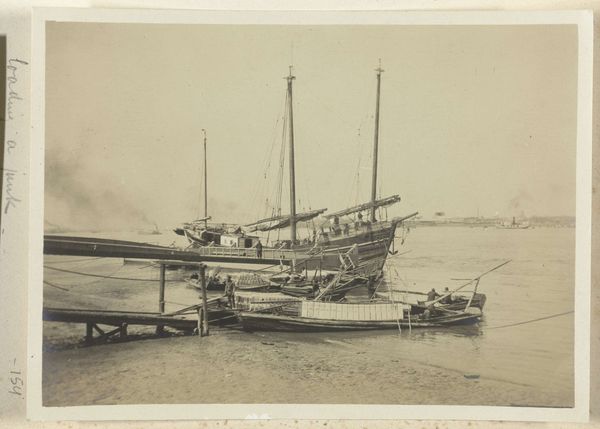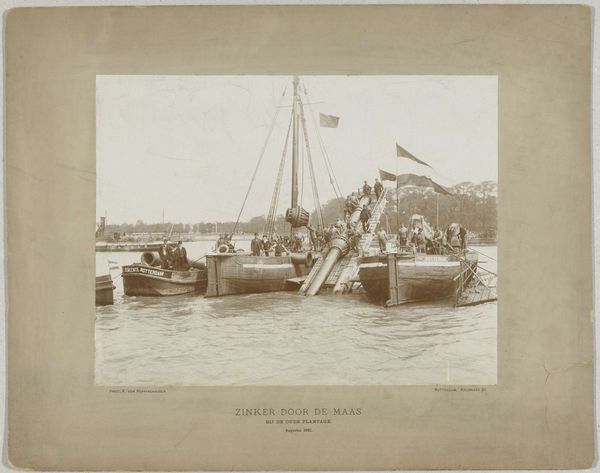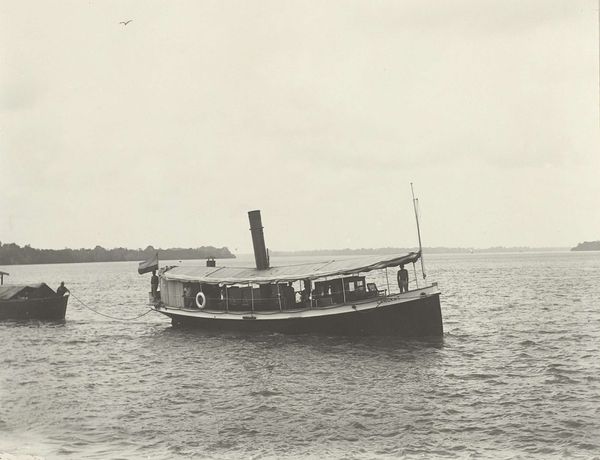
photography
#
landscape
#
river
#
photography
#
historical photography
#
orientalism
#
19th century
Dimensions: height 205 mm, width 262 mm, height 469 mm, width 558 mm
Copyright: Rijks Museum: Open Domain
Editor: Here we have Antonio Beato’s photograph, "Raderboot 'Rameses' op de Nijl," taken sometime between 1862 and 1895. It captures a paddle steamer on the Nile. I’m struck by the stark contrast between the ornate boat and the rather barren landscape behind it. What do you see in this piece? Curator: This image is a potent example of Orientalism. Think about who Beato was – a European photographer – and what he was capturing: the Nile, Egypt, during a period of intense colonial interest. The photograph isn't just a neutral record; it's a constructed view. Editor: Constructed in what way? Curator: Notice the steamboat itself. It’s a leisure boat operated by Thomas Cook & Sons. It signifies the rise of tourism and Western presence in Egypt. How does the presence of this leisure boat, juxtaposed with the backdrop of the Nile, contribute to a narrative? Editor: I guess it highlights a kind of power dynamic, where Westerners are experiencing Egypt as tourists, shaping their own narrative, as opposed to understanding the reality of the local communities. Curator: Exactly! It suggests control, access, and a very specific gaze. The "exotic" is packaged for consumption, obscuring the complexities of Egyptian society at the time. It’s essential to critically examine these historical photos; not as straightforward depictions of reality but as documents shaped by cultural and political biases. Editor: That definitely reframes my understanding. I was initially just seeing a pretty picture, but it’s so much more complex than that! Curator: Indeed. Seeing it in its historical and political light gives this photograph layers of depth.
Comments
No comments
Be the first to comment and join the conversation on the ultimate creative platform.

